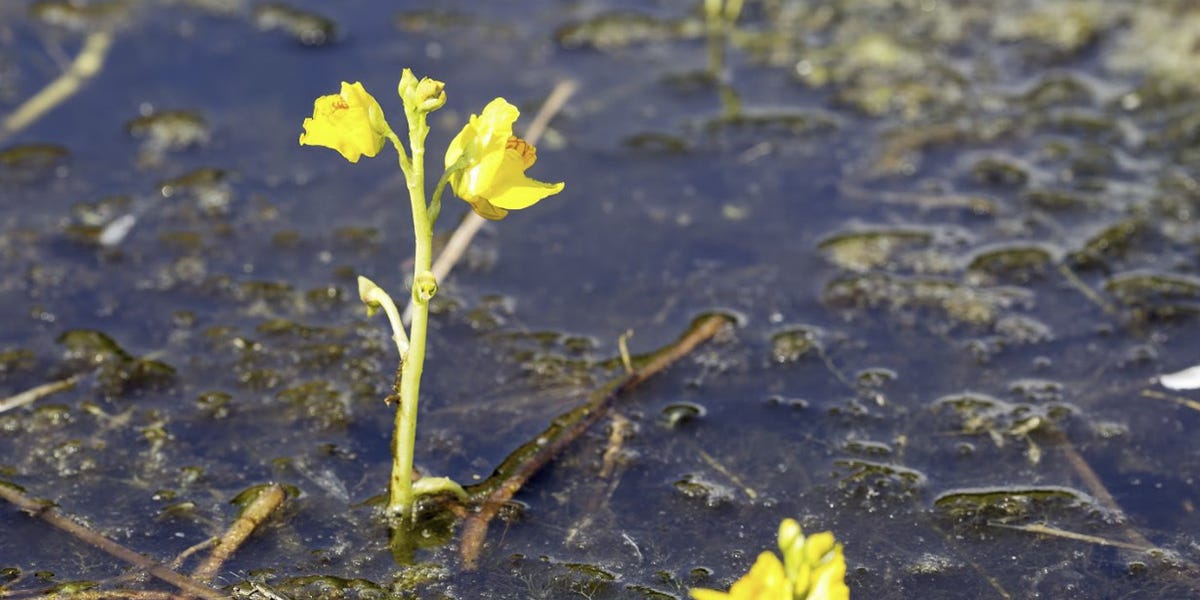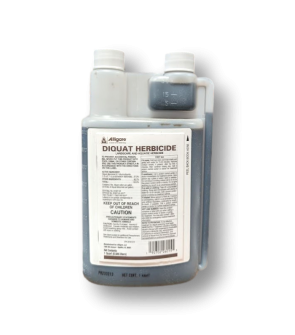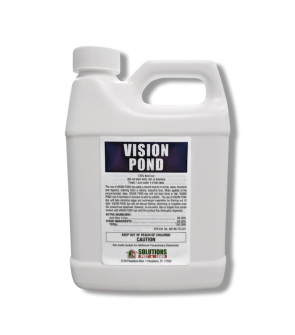Bladderwort Control
Most Effective Products
Bladderwort Control: How To Get Rid of Bladderwort
Bladderwort is a rootless free-floating pond weed that commonly grows on freshwater properties all over the country. Bladderwort is usually found in slow-moving, shallow, waters that are acidic.
Bladderwort can differ in size from a few inches to several feet long and is known for the small bladders attached to the plant which can capture and eat tiny insects and animals like fleas, sucking them up like a vacuum.
Bladderwort brings no benefit to the ecosystem as no aquatic life or wildlife animal likes to eat it which means its population can get out of control if left untreated. If you have bladderwort on your pond or lake, our DIY guide below will tell you exactly how to get rid of it using our professional aquatic herbicides.
Identification

The characteristics of Bladderwort include a main stem that is thick and flat that occasionally grows small branches which make way for a series of delicate leaves that can vary in number between 4 to 10. The main part of the weed lies a few inches beneath the water surface and can go unnoticed until the summertime when it gradually rises up to the surface. When it reaches the surface floating stage, Bladderwort grows a small bright yellow flower.
One of the most interesting things about the bladderwort is the reason the plant is given its name: for their underwater leaves which small oval bladders which can open and close to trap aquatic insects and other small organisms. The bladder works like a vacuum, where when the pray is close by the weed or touches it, it is sucked into the bladder and consumed.
Use our description and the image provided to help you to identify whether the weed you see is Bladderwort. If you need further assistance, you can contact us and we will help you with the correct ID.
Inspection

Bladderwort is a common aquatic weed in lakes and if they are prevalent, it is usually an indication that the water quality is very healthy. Be that as it may, multiple strains of bladderwort appearing may be too much of a good thing as it can interfere with recreation and is just plain ugly to see.
Where to Inspect
Walk around your waterbody to see where Bladderwort is concentrated. Note where you are seeing them as this will help to determine how much product you need and whether you may need to do a full broadcast application over the entire pond or just spot treat the problem areas.
What to look for
Check for small, yellow flowers protruding from the surface of the water or a plant with bladders a few inches under the water surface. Most of the bladderwort is submerged in the water but when it is mature enough it will flower and this is what is most visible. When you pull a Bladderwort plant out of the water it collapses into a slimy mass.
Treatment
Make sure before you spray herbicides to have on the proper protective personal equipment (PPE) in the form of gloves, glasses and a respirator mask. Our top recommendation of herbicides to control Bladderwort is Diquat. Diquat has proven to deliver excellent control of Bladderwort, which is one of the easier aquatic weeds to get rid of.
Step 1 - Prepare and Mix the Diquat

Before mixing and application, you will need to calculate the size of the water body you wish to treat to determine how much Diquat you will need. For water bodies, the measurement is usually done by calculating the acreage or acre-foot. To do this, measure the length, width, and average depth of the water body in feet then divide by 43,560 (Length (ft.) x Width (ft.) x Average Depth (ft.) / 43,560 = Acre-feet).
According to the label, Diquat should be applied between 0.5 to 2.0 gallons of product in water per surface acre (per 4-foot water depth). For severe infestations, use the 2.0 gallon per surface acre rate. For water depths of 2 feet or less including shorelines, do not exceed 1 gallon per surface acre.
Step 2 - Apply Diquat to target Pond Weeds
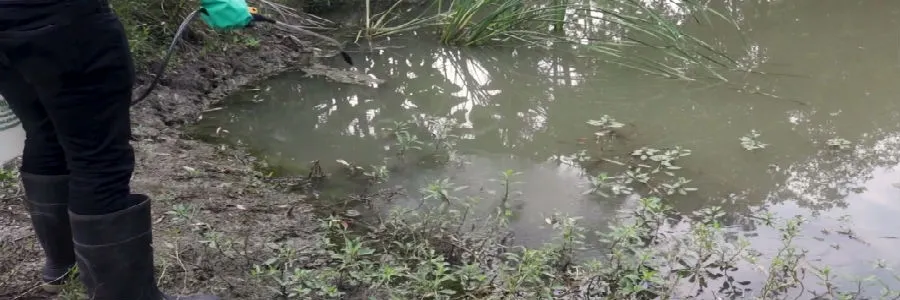
Once the Diquat is well-mixed. Depending on the targeted weed and the waters depth, you can spray the herbicide over the water along the shoreline, spot treat emerged weeds, or broadcast spray over the waters surface. Use a fan spray nozzle to ensure an even coating on the water surface.
To reach the bottom placement of the Bladderwoot, you may need an invert emulsion carrier with weighted hoses that injects the diluted spray solution near the bottom. Adding a copper-based algaecide may improve control.
Step 3 - Follow Up Applications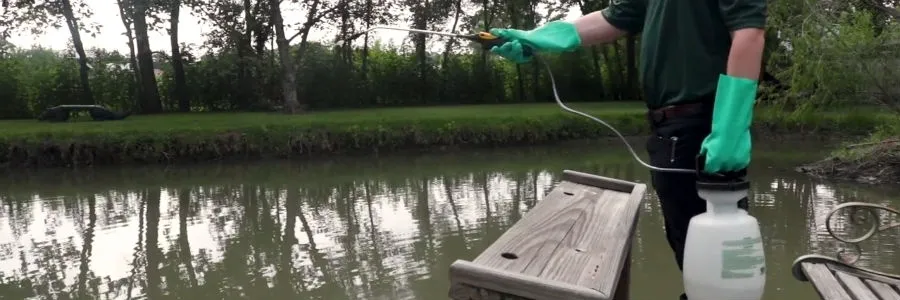
Reapplication between 14 to 21 day intervals may be necessary to totally get rid of Bladderwort. Once the weeds have wilted they are dead; use rake or weed cutter to remove as much of the dead plant as possible. This prevents an accumulation of dead plants and muck and keeps your water body nice and clean.
Prevention
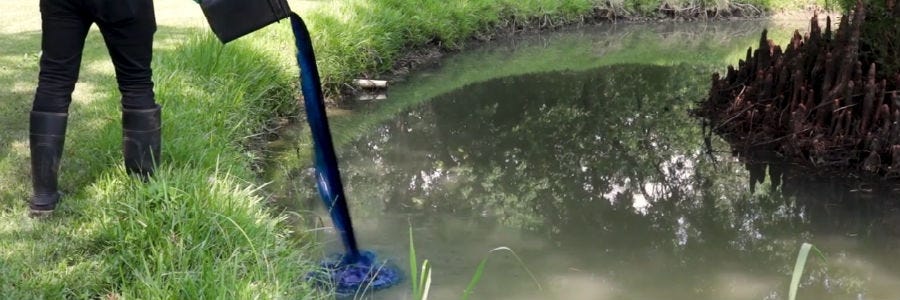
Apply Vision Pond Dye to your pond to ward off any re-establishment of Bladderwort. This product is a filtering agent and helps to reduce submerged vegetation growth and also improves the visual look of your water body. You can also apply the suggested products periodically throughout the growing season as a preventative measure.
Measure the appropriate amount of Vision Pond Dye into a bucket based on your pond area measurement findings. The label recommends applying at a rate of 1 quart of product per 1 surface acre of water at a 5-foot average depth.
Pour the pond dye over the edge directly into the body of water and the water's natural movement will disperse the dye.
Key Takeaways
- Bladderwort is a carnivorous weed that is known for eating insects and little animals where it grows. Heavy infestations of bladderwort can mess with the look of a lake or pond.
- Use Diquat Herbicide and perform spot treatments to eliminate invading Bladderwort.
- Regular monitoring, preventative applications of herbicides and adding Vision Pond Dye to your water body are the best tips for preventing Bladderwort from coming back.
